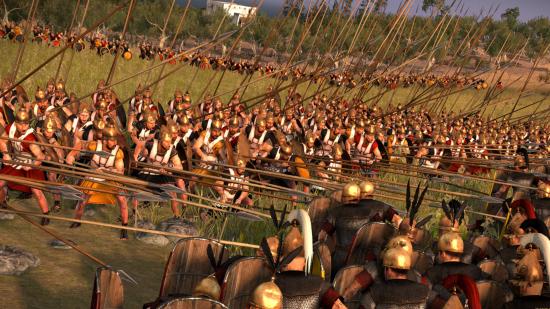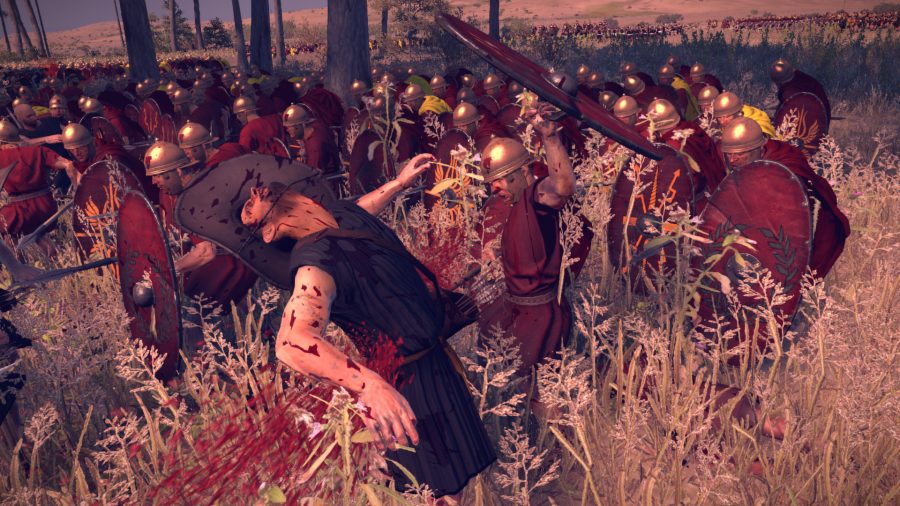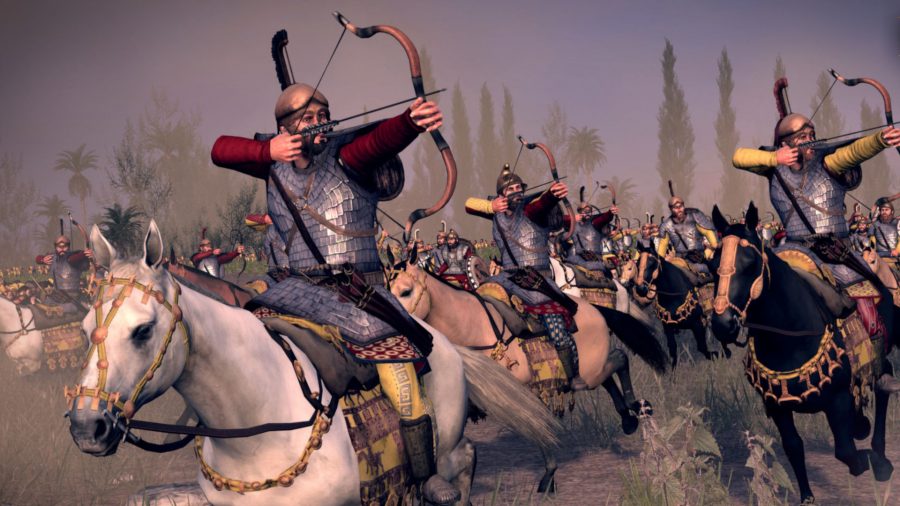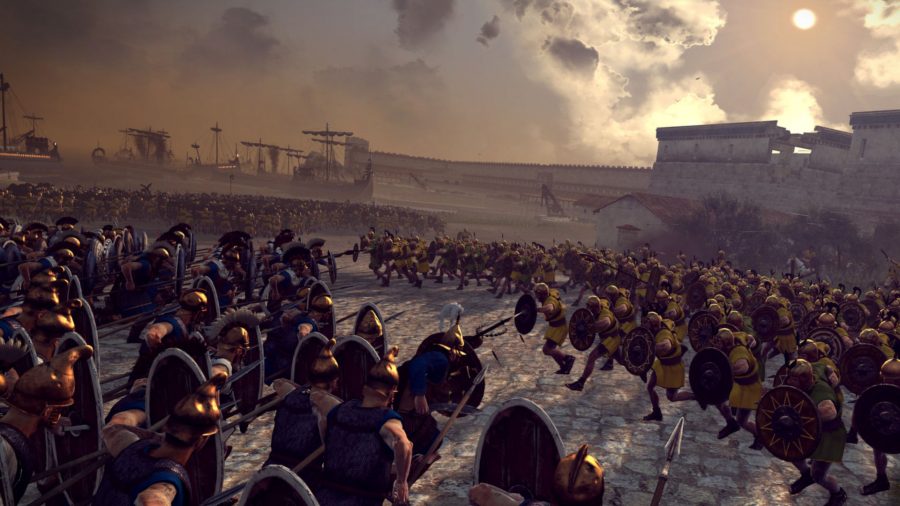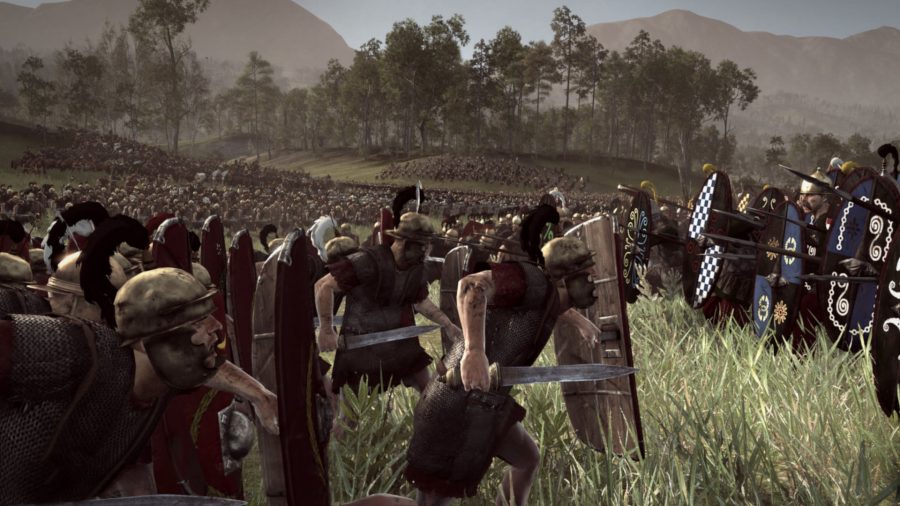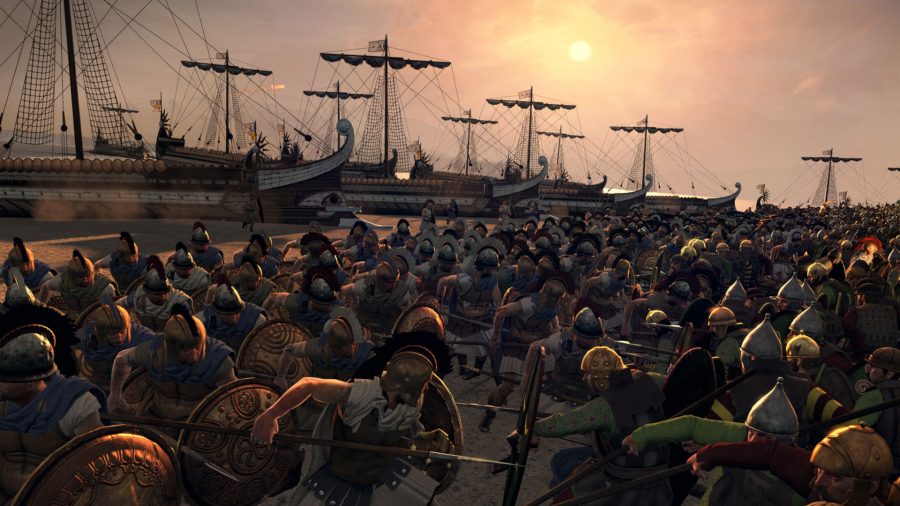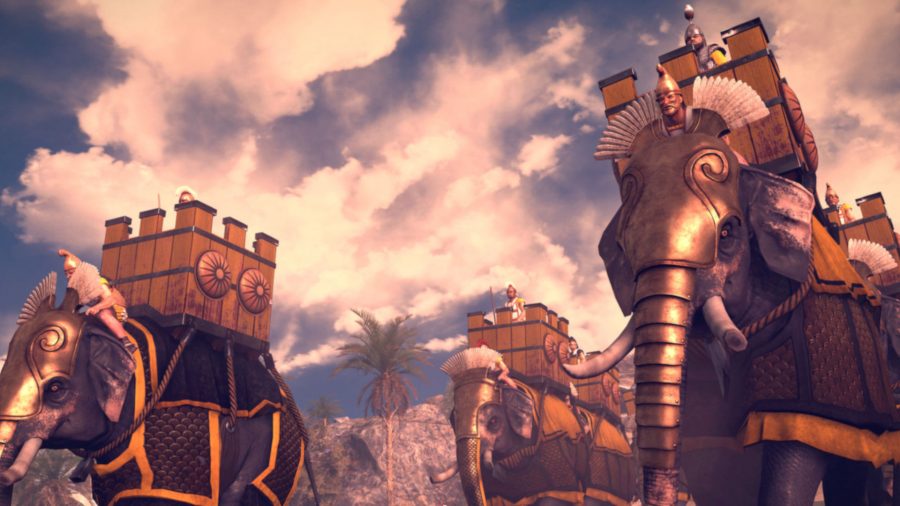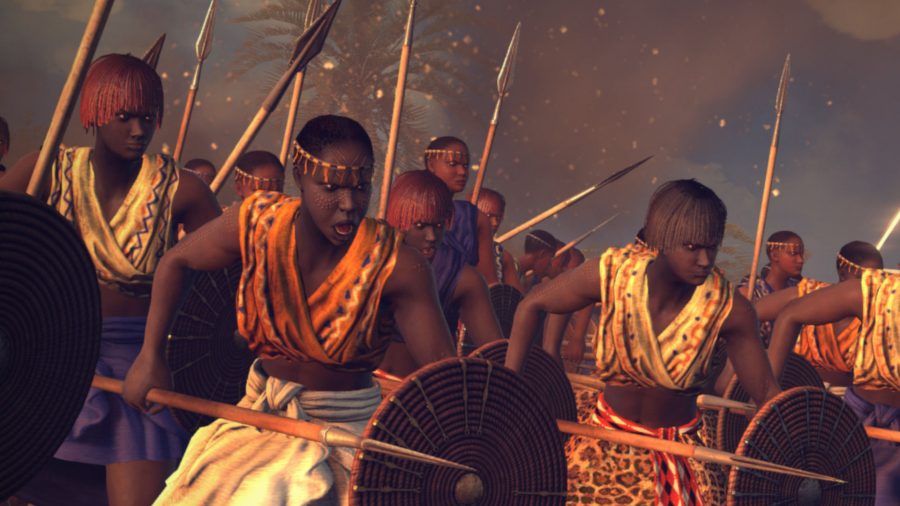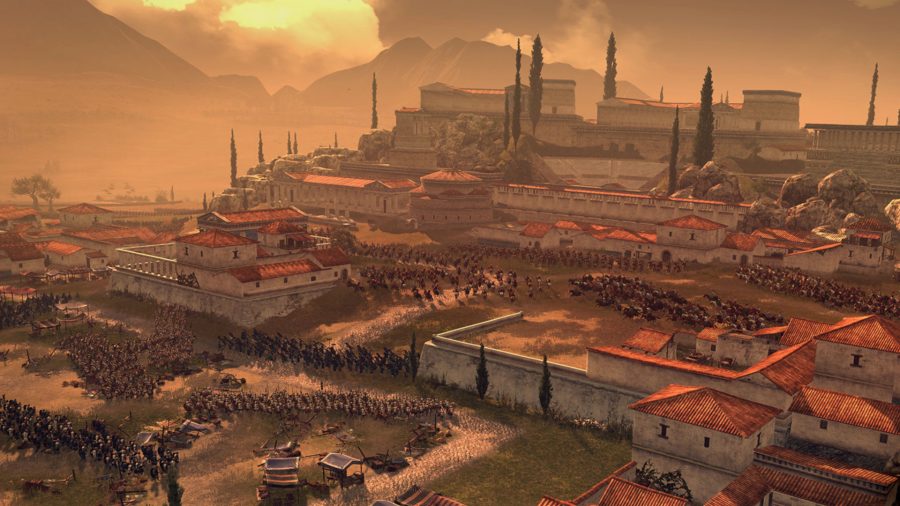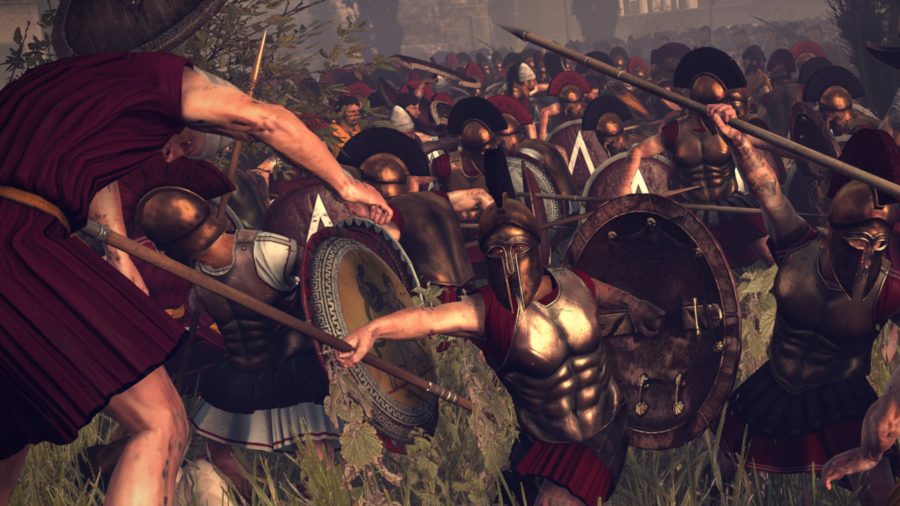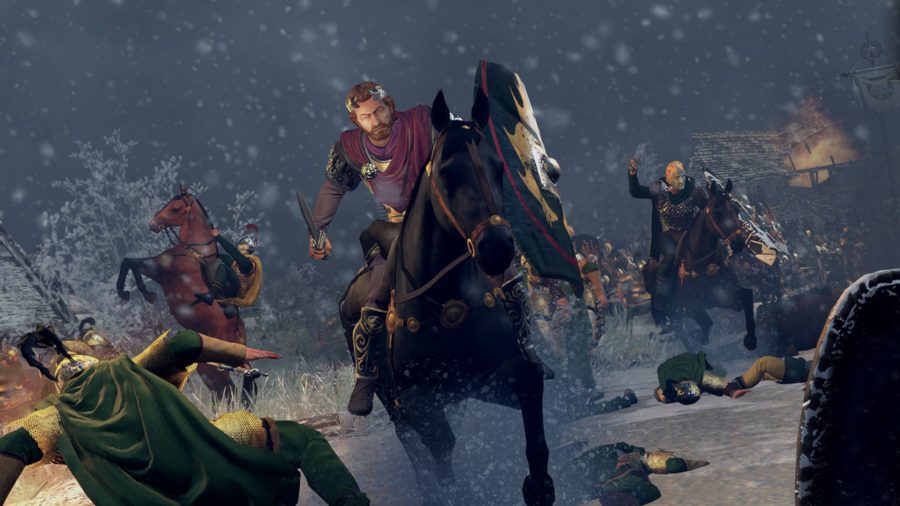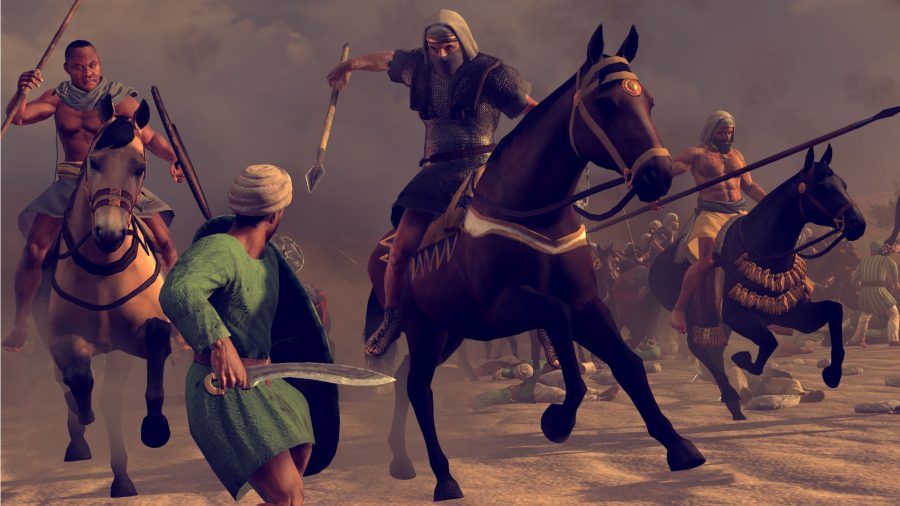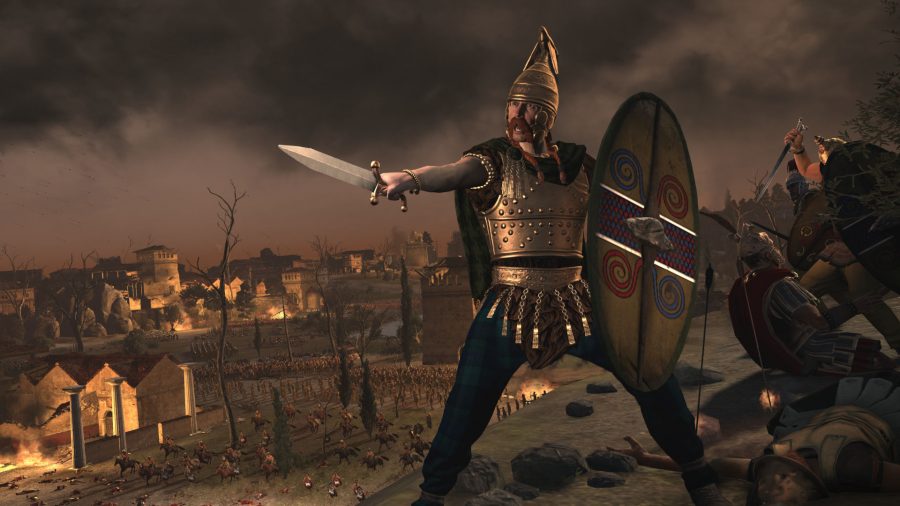It may not be the shiniest historical Total War game anymore, but Total War: Rome II still wants to be your friend. Even no, it still pulls in a respectable 5-6,000 players on average a day, and is only just behind the newer Three Kingdoms is at at the moment. We imagine that Rome 2 mods help with that, as does the DLC library.
This is a comprehensive list of every faction, unit, and campaign pack ever sold for Rome II in order of release. Our goal here is to summarise the key points, along with details on what makes it stand-out as an expansion along with our general impression as to whether or not it’s worth picking up. The golden rule here is that a decent sale can forgive most things, and Rome 2 old enough to benefit from high discount events now, but we still hope you find it useful.
Also remember; Total War DLC’s have become fairly factional/thematic, so your mileage can and will vary depending on what’s on offer. So if you don’t care about the Greek states, for example, then you may not want to buy this pack no matter how glowing our recommendation is.
Total War: Rome 2 DLC
Here is a list of all of the Rome 2 DLC released to date:
- Blood & Gore
- Nomadic Tribes Culture Pack
- Greek States Culture Pack
- Hannibal at the Gates Campaign Pack
- Caesar in Gaul Campaign Pack
- Pirates and Raiders Culture Pack
- Beasts of War Unit Pack
- Daughters of Mars Unit Pack
- Black Sea Colonies Culture Pack
- Wrath of Sparta Campaign Pack
- Empire Divided Campaign Pack
- Desert Kingdoms Culture Pack
- Rise of the Republic Campaign Pack
Total War: ROME II – Blood & Gore
Highlights
- Blood effects added when units take damage.
- Decapitation and dismemberment effects on selected death animations.
- Blood decals appear on terrain, and squishy sound effects play when people get stabbed.
Is It worth it?
Nope. Simple as that. The effects are not that noticeable nor add a lot to the game, and their minor cosmetic role is not worth the asking price.
It’s also worth noting that ever since Shogun II, Creative Assembly’s practice of charging for this DLC has caused outcry among fans, with many arguing that blood and dismemberment should already be included in a game called ‘Total War’ anyway. Creative Assembly’s official explanation is that offering the DLC allows them to keep the PEGI 16 rating, but there’s been no confirmation that said DLC *needs* to be premium. Either way, not even worth it on sale.
Total War: ROME II – Nomadic Tribes Culture Pack
Highlights
- Adds three new playable factions: the Roxolani, the Massagetae, and the Royal Scythians.
- New culture-specific roster, building chain, and tech trees.
- Cavalry focused nomad culture which is not nomadic, but actually uses the existing city/settlement system.
Is it worth it?
Not really. While the new factions might sound interesting to people who like the idea of nomadic cultures, this DLC was badly executed. Factions are not really that different from the ones already available in the vanilla game and unit rosters are mainly composed of cavalry, which makes field battles somewhat easy but turns sieges into an exercise in frustration.
Back when Nomadic Tribes was launched, CA hadn’t learned the power of making good asymmetrical factions, so the result is a weird unbalanced reskin of some minor factions. If you want a good Nomadic experience, go play Total War: Attila.
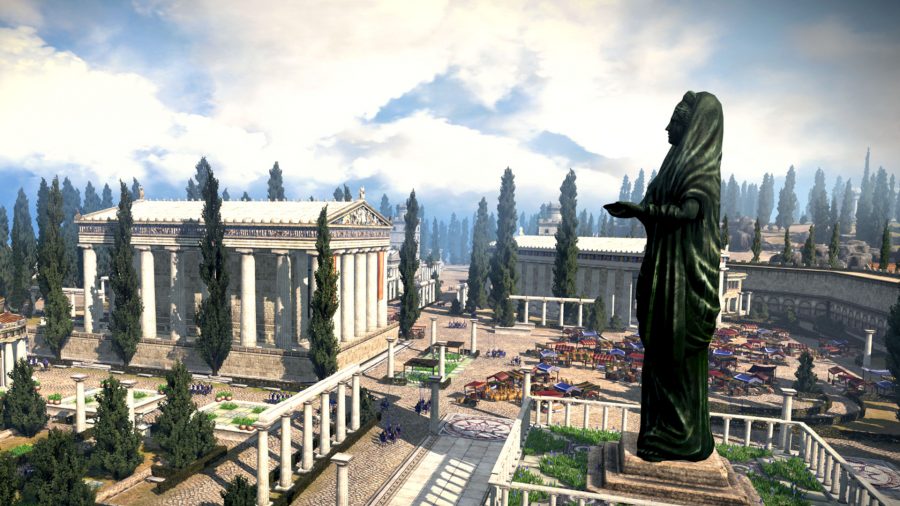
Total War: ROME II – Greek States Culture Pack
Highlights
- Adds three new playable factions: Athens, Sparta, and Epirus.
- New culture-specific roster, building chain, and tech trees.
- Unique cultural victories, traits, and military traditions.
- Does not include the Wrath of Sparta Campaign Pack.
Is it worth it?
The Greek States Pack was released a day after Rome II first launched, which explains why many quite rightly feel like this content should have been part of the main game — and why the community is still pissed off at it being sold separately.
More like this: Read our Total War guide for top tips
It features the most prominent factions ever added to Rome II via DLC, and they have interesting (if ordinary) bonuses: Athens gets boosts to cultural income, Sparta has a higher unit experience for infantry recruits, and Epirus goes all crazy on public order and minor settlement wealth.
If you like Roman-era Greece, the DLC is a no-brainer, but be warned: their rosters are lacking and can’t match the legionaries mano a mano due to Greece starting to lose much of its power around this period, which ultimately creates a unique yet underwhelming experience.
Total War: ROME II – Hannibal at the Gates Campaign Pack
Highlights
- New campaign map focused on the Western Mediterranean.
- Campaign is quicker than the Grand Campaign, making it ideal for multiplayer.
- New units, new playable factions (including on the Grand Campaign), and a sweet new diplomacy-focused tech tree that functions around client states and alliances.
- 12 turns per year, so your generals won’t die after an hour of gameplay.
- All about Rome vs Carthage.
Is it worth it?
Ah, Hannibal. The hated Carthaginian that everybody loves. The dude crossed the Alps with elephants just to stab Rome in the heart, and nearly brought the whole Empire crashing to its knees when it was merely a young republic. The guy was good.
More like this: The best strategy games on PC
This campaign pack is all about the Second Punic War, putting the spotlight on Rome and Carthage. This campaign is more focused than the main one, which means you’ll be sauntering around Italy, Spain, and North Africa and getting into a bunch of battles.
Like most Total War DLC’s, the inherent value of it depends on how much you like the subject matter, but on a technical and gameplay perspective, Hannibal at the Gates is novel and good enough to warrant merit. Just don’t expect to recreate the Cannae, because Rome II is a really melee-focused game.
Total War: ROME II – Caesar in Gaul Campaign Pack
Highlights
- Expanded map of Central Europe and Britain where each year lasts 24 turns.
- Campaign is quicker than the Grand Campaign, making it ideal for multiplayer.
- New units and playable factions (including on the Grand Campaign).
- New mid-game crisis (Roman interventions and Gaelic rebellions) to replace Grand Campaign’s Civil Wars.
- Great focus on characters, including Julius Caesar and Mark Anthony.
Is it worth it?
Yes. Similar to Hannibal at the Gates, this campaign pack offers a more focused experience in an expanded section of Europe, allowing a quicker play-through both online or off. Caesar in Gaul shockingly takes place in modern day France and the south portion of Britain, where Julius Caesar finally completed the conquest of the Gaelic people.
The campaign only has four factions — three of which are Gallic — but it has another 44 cultures, a greater focus on characters, and some generally interesting battles with noted historical characters, making it a treat to any Roman (or Gaelic) fan out there.
Total War: ROME II – Pirates and Raiders Culture Pack
Highlights
- Adds three new playable factions: the Ardiaei of Illyria, the Tylis, and the Odrysian Kingdom.
- New culture-specific roster, building chain, and tech trees, alongside a new religion.
- Bloody pirates!
Is it worth it?
Not really. Like the Nomadic Tribes DLC, this culture pack features half-baked factions that lack both gameplay development and historical flavour. Like the Nomadic Tribes and their utter lack of nomadin’, the Pirates and Raiders Culture Pack lacks any kind of piratin’ (or raidin’).
Stay away unless you *really* want all of the DLCs. If you want a pirate fix, we have a list of the best pirates games to plunder.
Total War: ROME II – Beasts of War Unit Pack
Highlights
- Seven new units, each one recruitable by specific factions.
- Dogs, elephants, and armoured camels alongside artillery that fires bees, snakes, and even scorpions — all of which are actually historically real.
- Three new infantry units dressed in animal stuff, such as wolf hides, crocodile scales, and the very middle-aged woman-y leopard skin.
- Armoured camels.
Is it worth it?
Kinda — yes for unit diversity, no for usefulness. While the animals and infantry units are very useful, the siege weapons are mostly a gimmick — armoured Camel Cataphracts can plunge through enemy lines like the best cavalry out there, but Scorpion Pot Ballistae can’t kill a guy even if their lives depended on it (and it often does).
Buy it only if you want powerful faction-specific infantry and animal units, and even then, don’t expect King Leonidas and his 300.
Total War: ROME II – Daughters of Mars Unit Pack
Highlights
- Seven new infantry choices composed of female-only troops.
- Powerful units that can be recruited normally by the main factions, or by anyone as mercenaries.
- Girl power!
Is it worth it?
Yep. Aside from looking cool and adding some much-needed unit diversity (looking at you, Warhammer II’s High Elves), these womenfolk can kick the asses of most male fighters six ways till Sunday. They’re not exactly historically accurate in the sense of being fielded in every battle, but neither were Praetorian Guards — and that doesn’t stop you from making whole legions of them, does it?
Total War: ROME II – Black Sea Colonies Culture Pack
Highlights
- Adds three new playable factions: Cimmeria, Pergamon and Colchis
- New culture-specific roster, building chain, and tech trees
Is it worth it?
Yes. A Greek-inspired hybrid unit roster gives the Black Sea colonies a fighting chance against major powers, while its very distinct and significant faction bonuses create the first somewhat diverse Culture Pack in Rome II’s history.
As former citizens of the Greek states, Cimmeria, Pergamon and Colchis all share the same cultural bonuses to research rate and cultural conversion, making them quite good at conquering rival regions with advanced troops and keeping public order in check. Overall, it’s a doozy experience if you like these specific factions, so go for it.
Total War: ROME II – Wrath of Sparta Campaign Pack
Highlights
- 432 BC, the earliest period ever depicted in a Total War game so far.
- New map of the Greek world, featuring 22 provinces, 78 regions, and 12 turns per year.
- Four playable factions: Athens, Corinth, Boiotia, and Sparta, and the Persian Empire as a non-playable threat.
- New unit rosters, tech trees, and events in the form of the Panhellenic Games and Greek Festivals.
- Does *not* include the Greek States Culture Pack.
Is it worth it?
This is Sparta!
But seriously Tho?
Kinda. If you want a chance to play as the Greek States without getting utterly trounced by Rome or Carthage or Parthia, yes. However, the campaign as a whole does suffer from a lack of balance, with everything taking way too long to get interesting.
Due to the way most factions have nearly identical rosters, battles often devolve into a pitched battle of equal forces, and the DLC has a tendency to spring rebellions and betrayals at the worst moments to completely ruin your experience. If you like one of the Greek factions and can weather the shortcomings, you’re in for a nice experience.
Total War: ROME II – Empire Divided Campaign Pack
Highlights
- Grand-scale campaign, bigger than Caesar in Gaul or Wrath of Sparta.
- 10 playable factions, including three Roman ones.
- Huge focus on characters, similar to Napoleon: Total War and the Total Warhammer franchise.
- New units, buildings, and techs alongside new period-specific events, dilemmas, and missions, including new campaign features in the form of Plagues, Cults and Banditry.
Is it worth it?
Yes. This 2017 expansion was the first DLC released since 2014 and came about because Creative Assembly realised Rome II had more players in a day than every other historical Total War combined (at the time).
The campaign seems to take lessons from Warhammer and makes main characters like Aurelian and Queen Palmyra incapable of being killed, wounding them for several turns instead of removing them from the game permanently. Overall, it’s a very good campaign that differs enough from other Rome II experiences. Read our Empire Divided review for more.
Total War: ROME II – Desert Kingdoms Culture Pack
Highlights
- Adds four new playable factions: the African/Arabian Kingdoms of Kush, Saba, and Nabatea, alongside the Numidian Masaesyli.
- New culture-specific roster, building chain, and tech trees.
- Challenging starting positions ally to very distinct faction bonuses and trade resources to create a novel Rome II experience.
- Armoured camels.
Is it worth it?
If you like the factions, yes. Out of all of Rome II’s Culture Packs, this is definitely the one that feels the most fleshed out. Each of the four factions have clearly cut out strengths and weaknesses both on the campaign and in battle, and while their varied rosters contain most unit types in the game, they clearly excel in different fields. The best thing, however, is how they can often go toe to toe against Rome if played properly, especially when defending — which both feels good from a gameplay perspective, as well as strikes that ever elusive historical accuracy sweet spot. And it has armoured camels.
Total War: ROME II – Rise of the Republic Campaign Pack
Highlights
- Includes nine playable factions: Rome; the Sicilian Iolei; the Etruscan Tarchuna; the Gallic Senones and Insubres; the Italian Samnites and Veneti; and the Greek Taras and Syracuse.
- New units, buildings, and tech trees.
- New political events keep the campaign slightly unpredictable.
- War-focused campaign provides a less diplomatic experience.
Is it worth it?
Rome II’s equivalent to Shogun 2’s Rise of the Samurai expansion is a must-buy but it’s also targeted at fans of Rome’s early period. Aside from featuring a completely different geopolitical climate, the expansion clearly chronicles the period between the Early and Late Republic by steadily unlocking units, from hoplites and slingers to Triarii and Velites. It also includes new political events such as elections and uprisings that serve to keep the game dynamic, but it should be noted the DLCs only artillery is the Greek Ballista, and that is unlocked very far into the game by non-Syracuseans. Read our Rise of the Republic review for more.
We hope you found this guide useful. We have DLC guides for most of the newer Total War games if you want to check them out, such as Total War: Warhammer II and Total War: Three Kingdoms.
